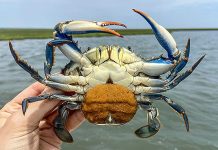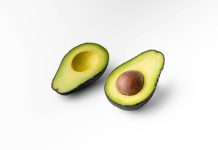
Why do giraffes have such long necks?
A new study by Penn State biologists suggests that the answer lies in the need for food, not fighting.
This study challenges the popular idea that giraffes’ long necks evolved primarily due to competition among males.
Instead, it shows that female giraffes have proportionally longer necks than males, suggesting that their high nutritional needs might have driven the evolution of this trait.
The study, published in the journal Mammalian Biology, analyzed the body proportions of both wild and captive giraffes.
It found that females likely developed longer necks to forage deeply into trees for leaves that are hard to reach.
This finding supports the classic theories by early scientists like Jean Baptiste Lamarck and Charles Darwin, who suggested that giraffes evolved long necks to reach high leaves and avoid competition with other herbivores.
However, a newer idea called the “necks-for-sex” hypothesis suggested that male giraffes evolved longer necks to compete for mates by using their necks as weapons in fights, a behavior known as neck sparring.
The hypothesis predicted that males would have longer necks than females. While males do have longer necks, they are also 30% to 40% bigger overall.
To investigate this, the researchers, led by Professor Doug Cavener, analyzed thousands of photos of giraffes.
They collected images from public photo repositories like Flickr and SmugMug and took their own photos of wild giraffes over the past decade.
Instead of measuring the giraffes’ absolute sizes, which is difficult from photos, they compared body proportions, like the neck length relative to the animal’s height.
“We can identify individual giraffes by their unique spot patterns,” Cavener explained. “Thanks to the Association of Zoos and Aquariums, we also have detailed records of all Masai giraffes in North America, including their family trees and birthdates.
This information helped us track when and how males and females start to show size differences.”
At birth, male and female giraffes have the same body proportions. Males grow faster during their first year, but significant differences in body proportions don’t appear until they reach sexual maturity around three years of age.
In adult giraffes, females have proportionally longer necks and trunks, while males have longer forelegs and wider necks. This pattern was observed in both captive and wild giraffes.
“Instead of stretching to reach high branches, giraffes, especially females, often reach deep into trees for specific leaves,” Cavener said. “Females are almost always pregnant or lactating by the time they are four or five years old, so we think their nutritional demands drove the evolution of their long necks.”
The researchers believe that sexual selection—competition among males or female preference for larger mates—likely explains the overall size differences between male and female giraffes.
Following the evolution of long necks, sexual selection may have led to males developing wider necks for fighting. Additionally, longer forelegs may help males during the brief and challenging mating process.
“Interestingly, we measure giraffes’ height to the top of their head, like humans, rather than to their withers, like horses and other livestock,” Cavener noted.
“Females have a proportionally longer neck and trunk, giving them a more sloped appearance, while males are more vertical.”
The research team is also studying genetics to understand which males are successful at breeding, aiming to shed light on mate choice and guide conservation efforts for this endangered species. “If female foraging is driving this iconic trait, it highlights the importance of conserving their dwindling habitat,” Cavener said.
“Masai giraffe populations have declined rapidly in the last 30 years due to habitat loss and poaching, so understanding their ecology and genetics is critical for effective conservation strategies.”
The study included contributions from Monica Bond, Lan Wu-Cavener, George Lohay, Mia Cavener, Xiaoyi Hou, David Pearce, and Derek Lee, all affiliated with Penn State.
Source: Penn State.



